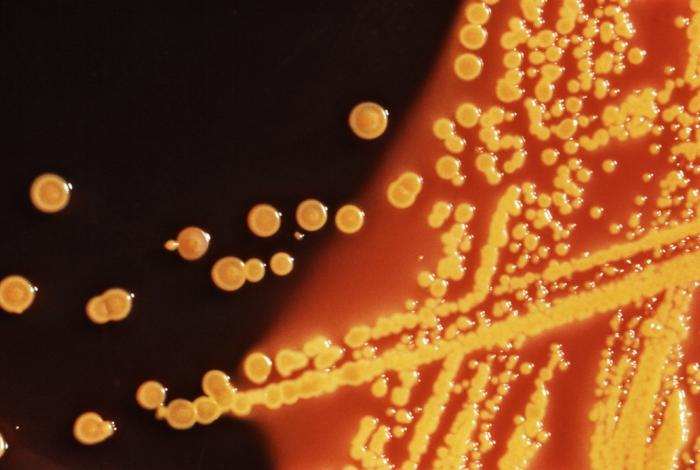
Colonies of E. coli growing on the surface of nutrient agar
BIOL 1406
PreLab 9a.1
How do I work safely with bacterial cultures?
 |
In this lab you will be working with a strain of the bacterium E. coli. The bacterial strains used by molecular biologists are generally safe to work with. E. coli, for example, is a common species present in the digestive tract of all warm-blooded animals and it is usually harmless. When working with bacteria, however, it is wise to remember that mutations may occur in any cell. In addition, harmless cultures may accidentally become contaminated with pathogenic bacteria. For these reasons, it is important to handle any bacterial culture as if it were pathogenic. The reasons for using safe practices when working with any bacteria are similar to the reasons why universal precautions are taken in hospitals when handling any body fluids. Although the majority of hospital patients do not have a blood borne disease like HIV or hepatitis, all body fluids are handled as if they were contaminated. |
|
Colonies of E. coli growing on the surface of nutrient agar |
Safety procedures for handling bacteria:
| Your Turn | |
| Why is it is important to handle any
bacterial culture as if it were pathogenic?
|
Check your answer. |
| List 4 things you should do before you
begin any work with bacterial cultures or other biohazards in lab.
|
Check your answer. |
| When handling bacteria, what should you do in case of an accidental spill? | Check your answer. |
| List 3 things you should do after you finish working with bacterial cultures or other biohazards in lab. | Check your answer. |
Close this browser window to return
to Blackboard and complete the practice quiz and assessment quiz.